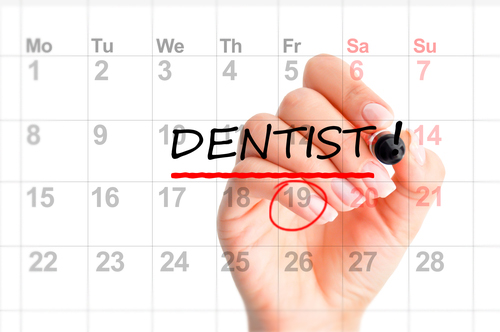Speak With Us Today
02 8999 5200Speak With Us Today
02 8999 5200
We all know that if we want to achieve the dental practice growth we deserve, we need to use the power of good marketing and strategy. However, without a plan built solidly from the ground up, marketing campaigns can range from mildly effective to highly ineffective. What does your current marketing plan look like? Do you know your customer avatar? What are your Unique selling points? How can you make the most out of every interaction?
In this guide, we cover the basics you need to transform your business, deliver successful marketing campaigns and gain more customers, keep them happy as regular clients, and have them spend more with your business.
This might seem like a bit of a silly question – but do you know who your customers really are? Are you targeting the right people? Or are you simply marketing to “everyone”?
“The aim of marketing is to know and understand the customer so well the product or service fits him and sells itself.” – Peter Drucker
When you are thinking about launching a new marketing campaign, or even just refreshing current strategies, then the first item on your “To Do” list is to develop your customer avatar.
Your customer avatar, which in some circles is also known as a ‘buyer persona’, is a description of your ideal target audience. Once you know who you are targeting for your dental business, you’ll uncover the best ways in which to market to this person.
Lizette Dawson
35, married with two children and a dog, living in Rose Bay in a house she owns with her husband. Their total household income for a year is $600K. Lizette was a PA to the boss of a large financial firm in the city before taking time off work to raise children. She coordinates everyone’s schedules, from kids swimming lessons to family holidays and all other important appointments. She runs a tight ship to make her family’s lives as rewarding as possible. In her spare time her favourite activities are heading to Manly for lunch with her girlfriends, going to the gym, and catching up on a good book.
When you are developing a customer avatar ask yourself the following questions to start forming a clearer picture of who they really are – and thus their behaviours:

More specific to dentistry you might think…
Now that you have a clear idea of your customer avatar or avatars (sometimes you may have more than one!), you need to identify your competitors – and where their strengths and weaknesses lie. It’s time for some more research! This is known as ‘competitor analysis’.
The first part of this task involves finding out who your competitors are. You may already know some of them off the top of your head, but start by doing a Google Search and seeing what comes up in your results. Search for keyword phrases like “dentist Sydney”, “dentist NSW”, “teeth cleaning Sydney”, “cheap dentist in Parramatta”, “best dentists in Double Bay”, etc. Have a think about what your customer avatar would be searching for.
Once you’ve developed your list – and we recommend choosing at least 10 competitors – you can start analysing their businesses.
Competitor analysis involves:
Whilst this list is not exhaustive, it enables you to create a baseline about what your competitors’ services, customer care, stand out features, premises, marketing, etc. look like. From here, you can start to identify where they are doing things better than you, as well as see where your practice is coming out on top. Take the time to determine which competitors’ businesses are most similar to your own.
Taking the best elements of your competitors’ business strategies and incorporating them into your own (should your customer avatar fit) will help to give you the competitive advantage.
Customers will generally shop around on at least three different websites to determine which company to choose. Which were the dental surgeries that were most similar to yours from your competitor analysis? Which was the most convincing? What do you offer customers that they do not?
Your points of difference might be:
Again, this is not an exhaustive list. Look at any of these things that already set you apart from your competitors and ask yourself: would it be important to my customer avatar? A unique selling point that your customer will not care about is not actually beneficial for your business.
If your competitors are more effective at attracting the type of customers you desire, it’s likely they have more unique selling points that appeal to that person.

Are you and other dentists in your suburb pretty much on par? Perhaps it’s proving difficult to differentiate yourself with unique selling points that appeal to your target audience. You can give yourself a leg up by offering incentives to potential customers to make them come to you instead.
When they stumble across your website, see your ads on Facebook, or visit your social media page, you can try to coax them towards that first appointment by offering incentives like:
The type of incentive that you offer should, again, appeal to that customer avatar that you have created.
It can be hard to drum up new business for any type of service-based company. You may have invested a lot of time and money into advertising efforts that have been ineffective in the past. However, it’s important to remember that you need to engage and deliver to new patients (and keep current ones from defecting to the competition) at every point of contact.
For instance, when a new potential customer calls to try and book an appointment on a particular time and day that is unavailable, your reception staff should have a highly cultivated script that guides them towards a different appointment time. “Sorry, Joseph isn’t available at 3pm on Friday, but he does have a 5pm slot, or you’re able to see Kathy at 3.” “no that doesn’t work for me” “Joseph’s free at the same time next week if that’s more preferable?” and so on.
At the end of a customer’s visit you can guide them towards setting an appointment for their next check-up, making it known they can cancel at any time. In the lead up to the appointment, send a gentle SMS or email reminder to request a confirmation.
Do you have a strategy in place which provides incentive for existing customers to refer their friends? Consider which point in your contact you do this – is it via email newsletter, pamphlet or an encouraging sign in your waiting room?
Having a clear purpose in mind for each interaction helps to develop the strategies to get those customers in the door, keep them coming back, and even send referrals from their friends and family through to you.
Social proof has become a key method by which people conduct research about products, services, and businesses. Social proof might come in the form of online rating sites like TripAdvisor, product reviews such as on Amazon, the Facebook business star rating system, customer testimonials on businesses’ websites, mentions from other businesses or in the media, or even simply word of mouth.
All these proofs are effective in helping customers decide whether to go with a particular product, service, or business. If you haven’t been actively cultivating your social proof, you should get started now.

You might like to think about doing some of the following:
Building a positive appearance of your business from the outside takes time, but remember that it is well worth it when you’re talking about converting potential customers.
Everyone is at different stages of their life journey – and even of their dental journey, which means that right now you won’t always make the conversion from prospective customer to new patient. Even if a prospect isn’t going to book in for that appointment now, that doesn’t mean they won’t be seeking these services in a month or even next year.
Maybe they don’t have the cash together for that root canal right now. Perhaps they are taking off on a 6-month holiday in a couple of days – if you have their contact details on hand, you’re able to follow up with them later.
Keep a database of all your prospects and reach out to them every so often to see whether they’d want to come in. Email is generally the most polite way of doing this. Feel free to incentivise the email with a special offer or something to help sweeten the sound of the concept.
Many dentists are undercharging their services – could you be one of them? Have a look around at the competition and their price points. If you’re lowballing yourself, it may become apparent here. If you haven’t put your prices up in many years, then it’s probably time to have a look at them again.
If your prices are already reasonable for the current climate, have a think about how to entice existing customers into spending more with you by cross-selling or upselling products and/or services. For instance, offering a new electric toothbrush could be a cross sell when a patient comes for a check up. An example of an upsell is offering in-chair whitening instead of the home whitening kit they came in for. Both cross selling and upselling can be quite lucrative depending on how convincing you are about the benefits of the product or service.
Once you secure that patient you want to make sure that they stay with you for the long term, and come in for regular, scheduled visits instead of forgetting about their teeth for a year and a half. While some clients may require a recheck in a couple of weeks, others may not need to visit the dentist for 6 months to a year – but that’s no reason not to book in an appointment in advance.

A gentle script at the end of their appointment in the reception works well for this interaction.
“Lets book you in for a check up in 6 months time. Same day of the week and time? Don’t worry, you can reschedule at any time if something pops up.”
Concise, locks them in, but leaves an easy out clause. Follow up a week before the scheduled appointment just to remind them – they’ll likely have forgotten unless they keep a very organised diary!
There are many different ways in which to attract potential customers to your dental practice, keep them on as ongoing clients, attract extra money during appointments, and bring them back in more regularly. Cultivating your strategies for each of them is the difference between “just getting by” and being truly successful.
Our Dental Practice Growth Worksheet gives you a helping hand, painting more of a picture about exactly how to go about this – guiding you through detailing your patient profile, your unique selling points, nurturing patients, and more. It’s available as a free download exclusively from us at Altitude Digital to you.
Share This Story
Tag


Speak with Altitude Digital today for a FREE website and marketing review
Contact Now© 2021 Altitude Digital | All Rights Reserved

Leave A Comment